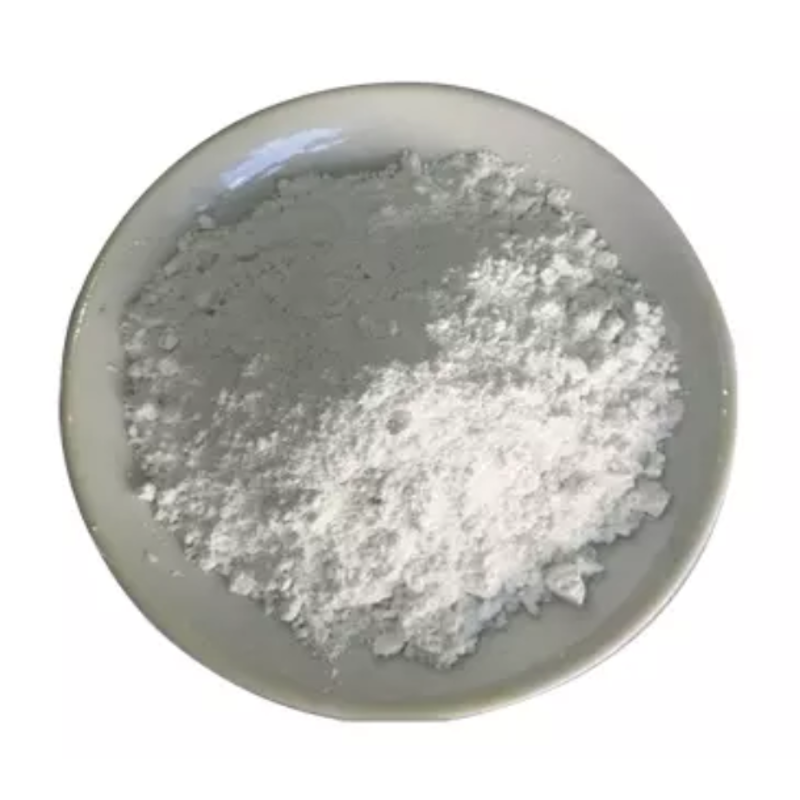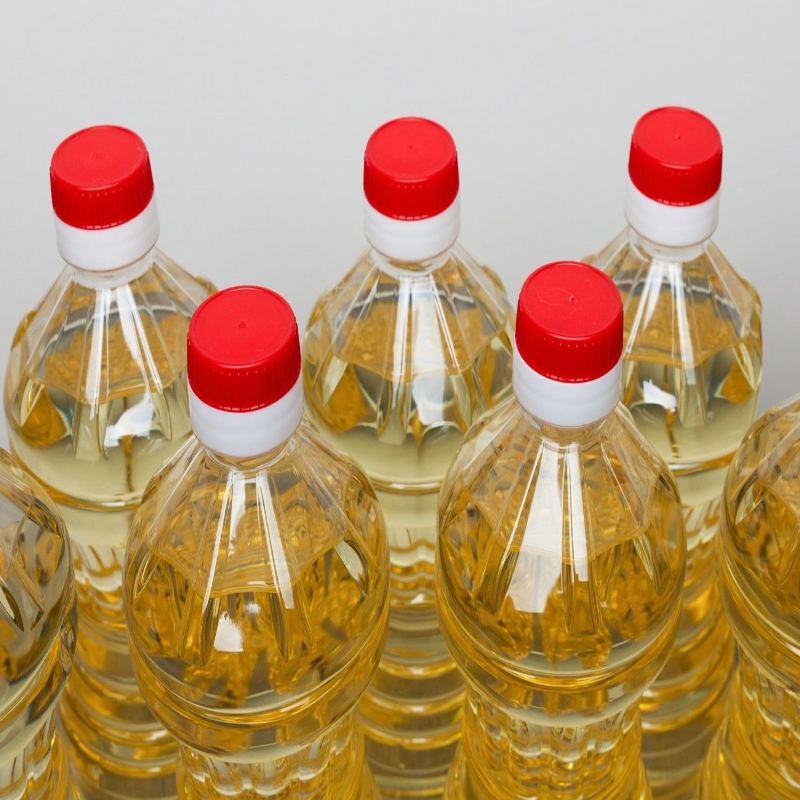The application of the feeding enzyme in pig production.
-
Last Update: 2020-07-29
-
Source: Internet
-
Author: User
Search more information of high quality chemicals, good prices and reliable suppliers, visit
www.echemi.com
Since the study of feed enzymes in 1958, enzymes have been used in the feed industry for more than 50 yearsFeeding enzyme preparations can not only improve feed utilization rate, save food, but also partially replace antibiotics and organic arsenic and other substances, with non-toxic, harmless, non-residual and other advantages, in line with the requirements of green environmental protection, so in the promotion of "green agriculture" today, with the continuous development of biotechnology, the application of enzyme preparations is also more broad, for the feed industry to high efficiency, non-pollution, non-residual direction provides the possibilityUEM1Feeding EnzymeS Overview uEMCurrently, the enzymes added to feed are produced by microorganismsThere are also various enzymes in plants and animals, but the extraction yield is low, the cost is very high, and the production is limited by a variety of factors such as the season, the use of microbial production overcomes the above shortcomingsEnzymes, as an efficient biocatalytic activity protein produced by living cells in animal organisms, break down various macromolecular nutrients into small molecule nutrients that can be absorbed and utilized by the bodyThe research shows that the addition of feed foreign source enzyme preparation will not only affect the activity of endogenous enzymes, but also accelerate the absorption and utilization of nutrients and further reduce feed costsEnzyme preparation as a new type of high-efficiency feed additives, from the initial amylase and protease to the present phytoenzyme and non-starch polysaccharide complexenzyme, from supplementing endogenous enzyme secretion deficiencies to eliminate a variety of anti-nutrient factors and toxins in the feed, the variety of feed enzymes are more and more variety, its application is more and more extensiveUEMat present, the enzyme sage agents added to animal feed are mainly divided into two main categories, monoenzyme preparations and compound enzyme synthasesMonoenzymes can be divided into endogenous digestive enzymes (amylase, protease, lipase, etc.) and exogenous digestive enzymes (phytoase, non-amyloid polysacmogase, etc.)Because of its different functional characteristics, compound enzyme preparation is divided into beta-glucotose-based feeding compound enzyme preparation, protease and amylase-based feeding compound enzyme preparation, cellulase, xyzusase and pectinase-based feeding compound enzyme preparation, phytic enzyme-based feeding compound enzyme preparation and so onAmong them, phytoase and non-starch polysaccharide and other applications are more widely useduEMenzyme is a special feed additive with the role of nutritional additives and non-nutritional additives The research shows that enzymepreparations have a special effect in improving the digestive utilization of animal nutrients, promoting intestinal health, physiological and immune regulation, detoxification, anti-bacterial sterilization, antioxidant and so on UEM 2 Application of enzyme sase in pig production uEM 2.1 application of cellulase in pig production uEM the conventional feed of pigs mainly corn-soan meal (bean cake) type, however, the cell wall of this kind of seed feed is mainly composed of non-starch polysaccharides (N S P, anti-nutrient factor) The resulting increase in the viscosity of the gastrointestinal diet of pigs, the increase of the viscosity of the digestive tract caused by poor absorption of nutrients, the abundance of nutrients caused a large number of harmful bacteria to multiply, on the intestinal mucosa on the fluff and microfluoriscus of the morphological structure caused damage, causing diarrhea, thereby reducing the absorption rate of nutrients uEM monogastric animals (especially piglets) do not secrete N S P enzymes to degrade the cell walls, which in turn affects the digestion and absorption of nutrients by the animal body UEM Sun Shoutian, etc , added 0.15% of the compound cellulase in the corn-so-meal-type diet of piglets, and the test results showed that cellulase had a very good effect on the growth rate of piglets, and also reduced the diarrhea problem of the piglets Yu Guiyang and others added 0.1% of the compound enzyme preparations to the corn-so-so-meal-type diet of 28-day-old weaned piglets, and the results showed that the average daily weight gain ratio of piglets increased by 42.11% and feed conversion rate increased by 12.32% Li Defa et al added cellulose enzymes to wheat gluten diets of growing pigs with an average weight of 19k g, and found that during the pilot period 0 to 2 weeks, the average daily harvest and average daily weight gain increased by 5% and 6.2%, respectively; Ren Ji-equality, studying the effectofs of cellulose enzyme spout on the growth performance of growing pigs in Rumex K-1 grass powder diet, found that cellulase can significantly improve nutrient digestion and feeding in growing pigs Yang Yedong, etc , added 0.1% cellulose enzyme to the daily grain of the skin-long hybrid ized-growing pig grain of about 15k g, and the test results showed that the daily weight gain was 15.64 percent higher than that of the control group, with a significant difference (P 0.01) uEM in addition, some studies have shown that adding cellulose enzymes to feed can improve the quality of pig carcasses and meat T h a c k e r s17 reported that the addition of 0.1% of the compound cellulase in the diet of fattening pigs (based on barley) increased weight and feed conversion rate, although not improved, but the lean lean thickness of the waist was significantly improved (P 0.01) This is consistent with the conclusions of the experiment on broiler, et al UEM 2.2 Phytic asse in pig production uEM phytic acid is widely found in a variety of plant feed raw materials, easy to bind to phosphorus into phytic acid phosphorus Phytic acid phosphorus is a typical anti-nutrition factor, can not be absorbed and utilized by animals, not only reduces the utilization rate of phosphorus in feed, but also can be combined calcium, iron, manganese, zinc and other metal ions to form insoluble Phytic asse is a sterase that an animal cannot produce but can hydrolyse the feed raw material sphysals and phytates Add phytic enzymes to feed, can effectively decompose phytic acid and phytate in various feed raw materials, promote the absorption and utilization of phosphorus in animals, eliminate the anti-nutrient effect of phytic acid, increase the digestion rate of feed nutrients, and reduce the content of phosphorus in animal waste UEM Huang Yi, etc , will be phytoase and cellulase in a 1: 1 ratio of mixing, added to 20k g pig's corn-soy meal-type diet, the results show that the compound enzyme preparation can improve the average daily weight gain of weaned pigs, reduce the weight gain ratio, improve feed conversion rate, but also improve the digestion rate of weaned pig nutrients (except fat) The study found that under the condition of adding 500FTU/kg microbial phytoase to the diet, the apparent digestion rate of growing pigs to phosphorus in wheat, rice and sorghum was 77.64%, 74.26% and 64.38%, respectively, an increase of 27.64%, 41.84% and 47.87%, respectively Zhu Renjun and others in piglet feed with phytic enzyme sezer to replace 50% and 40% calcium phosphate, respectively, found that the replacement of 50% calcium phosphate than the replacement of 40% of calcium phosphate can obtain a better ratio of meat and daily weight gain UEM 2.3 Compound protease in pig production uEM early feeding enzymes, are added to compensate for the infeplanet secretion in animals with infantage, weaning, or stress, usually for the production of alpha-amylase, protease and lipase in animals The uEM study found that adding a compound enzyme containing protease to piglets can improve piglet growth and development, improve feed conversion rate, reduce diarrhea and mortality C a m p b e l l (22) Studies have shown that the addition of a compound protease formulation to growing pig diet can significantly improve the digestion of nutrients in pigs Wu Tianxing et al studied the effect of acid protease and calcium pyreth compound on the production performance of weaned piglets, and found that weaned piglets gained 23.0% more weight daily (P - 0.01), and increased their feeding by 17.2% (P 0.01), reducing the material weight ratio 5.0% (P 0.05), a decrease in diarrhea rate of 88.8% (P 0.01), and apparent digestion rates of components such as dry matter, crude protein, calcium and phosphorus in feed increased by 22.5%, 24.5%, 21.1%, and 27.9%, respectively Yang Quanming added alpha-amylase and protease-based exogenous enzymes to piglets' daily grain, and found no significant effect on the weight of piglets' internal organs and small intestine length, but could improve the activity of protease, the protease activity of small intestine digestion solution was increased by 31.5% to 48.2%, and the average digestion rate of amino acids in the diet and feces was 85.9% and 79.5%, respectively, and the difference between the two were significant (P1100000) The study of Gao Yuhong, etc also showed that adding a compound enzyme formulation based on protease, etc., to feed can improve the production performance of weaned piglets and the digestion rate of nutrients UEM 3 Factors affecting the action of feed enzymes uEM 3.1 The effect of pig feed components on the activity of enzymes uEM enzymes as a protein biomolecular, its activity is affected by many factors Feed composition is complex, many of which affect the activity of enzyme preparations, such as plant coagulation and Cu2 plus, Hg2 plus, Ag plus, Fe2 plus and other metal ions will have a negative effect on enzyme activity, Z n2 plus, Mg2 plus, C a2 plus and other metal ions have an activation effect on the enzyme preparation, therefore, in the feed enzyme preparation preservation and grading pre-mixing process, try to avoid the adverse effects of the enzyme preparation If different types of diet because of the structure and composition of plant cell walls, the effect of adding different enzymes is better, the main anti-nutritional factors in China's conventional diet corn are lipolysaccharides; Therefore, it is more important to formulate a reasonable formulation of enzyme preparations, especially in areas rich in feed resources UEM 3.2 The influence of the feed processon on the activity of enzyme preparation suEM stability is the most critical factor affecting the quality of the feed enzyme product There are many factors that affect the stability of enzymes, including moisture activity, high temperature, high pressure, high humidity of the external environment and p H in the digestive tract Before graining, the grain feed must be adjusted, the raw materials to go through the high temperature, high humidity and extrusion of the combined action The process of tuning may affect enzyme activity High temperature can speed up the reaction speed of enzyme preparations and substrates, but also can cause some hydrophobic bonds in the enzyme protein molecules to break, change the molecular composition, so that the enzyme loss of activity In this regard, feed production generally uses packages of liquid enzymes sprayed or screening out of the high temperature bacteria fermentation production of high temperature enzyme preparations and other methods to reduce the inactivation of enzyme preparations in the feed process, in order to achieve the desired effect UEM 3.3 The effect of the breed and age of the pig on the effect of enzyme use uEM the breed and age of the pig are different, the digestive system is different The effect of the effect on enzymes is also different Such as local pigs and ternary hybrid pig nutritional needs are different, the use of enzyme sage preparation sage is not the same; In the milk pig stage, because of the low content of endogenous digestive enzymes in the digestive fluid, it is necessary to add some extra endogenous digestive enzymes to promote the digestion of feed nutrients by the milk pig, and to the growth and fattening pig stage, only need to add the pig body can not secrete phytoase or non-starch polysacchaenzyme can be uEM 3.4 The effects of pig gastrointestinal temperature and p H on enzyme activity uEM enzymes as protein biomoleculars whose activity is affected by many factors such as temperature, p H, and so on The normal temperature of the pig's digestive tract is about 40 degrees C, the stomach p H2.5 to 3.5, the small intestine p H5 to 7, and the large intestine p H is neutral The action conditionofing conditions of the feeding enzyme must be compatible with the physiological conditions of the animal's digestive tract and the p-H range of the digestive tract in order to achieve the best effect Such as phytoase the most suitable p H range of 2.5 to 5.5, mainly in the pig stomach, non-starch polysaccharide p H is 5 to 7, mainly in the pig intestines uEM China is a large country for feed use, to maximize the biocatalytic utility of enzymes, improve the utilization rate of existing feed resources, and actively expand the application of various unconventional feed raw materials in pigs, has become an urgent task As a new type of high-efficiency, safe and green biocatalyst, feed enzyme has good potential and broad application prospect in solving the shortage of feed resources and sustainable development of animal husbandry With the further development of scientific research, feeding enzymes will play an increasingly important role in animal husbandry uEM Has been used in the feed industry for more than 50 years since 1958, when the application of the enzyme was studied Feeding enzyme preparations can not only improve feed utilization rate, save food, but also partially replace antibiotics and organic arsenic and other substances, with non-toxic, harmless, non-residual and other advantages, in line with the requirements of green environmental protection, so in the promotion of "green agriculture" today, with the continuous development of biotechnology, the application of enzyme preparations is also more broad, for the feed industry to high efficiency, non-pollution, non-residual direction provides the possibility UEM 1 Feeding EnzymeS Overview uEM Currently, the enzymes added to feed are produced by microorganisms There are also various enzymes in plants and animals, but the extraction yield is low, the cost is very high, and the production is limited by a variety of factors such as the season, the use of microbial production overcomes the above shortcomings Enzymes, as an efficient biocatalytic activity protein produced by living cells in animal organisms, break down various macromolecular nutrients into small molecule nutrients that can be absorbed and utilized by the body The research shows that the addition of feed foreign source enzyme preparation will not only affect the activity of endogenous enzymes, but also accelerate the absorption and utilization of nutrients and further reduce feed costs Enzyme preparation as a new type of high-efficiency feed additives, from the initial amylase and protease to the present phytoenzyme and non-starch polysaccharide complexenzyme, from supplementing endogenous enzyme secretion deficiencies to eliminate a variety of anti-nutrient factors and toxins in the feed, the variety of feed enzymes are more and more variety, its application is more and more extensive UEM at present, the enzyme sage agents added to animal feed are mainly divided into two main categories, monoenzyme preparations and compound enzyme synthases Monoenzymes can be divided into endogenous digestive enzymes (amylase, protease, lipase, etc.) and exogenous digestive enzymes (phytoase, non-amyloid polysacmogase, etc.) Because of its different functional characteristics, compound enzyme preparation is divided into beta-glucotose-based feeding compound enzyme preparation, protease and amylase-based feeding compound enzyme preparation, cellulase, xyzusase and pectinase-based feeding compound enzyme preparation, phytic enzyme-based feeding compound enzyme preparation and so on which.
This article is an English version of an article which is originally in the Chinese language on echemi.com and is provided for information purposes only.
This website makes no representation or warranty of any kind, either expressed or implied, as to the accuracy, completeness ownership or reliability of
the article or any translations thereof. If you have any concerns or complaints relating to the article, please send an email, providing a detailed
description of the concern or complaint, to
service@echemi.com. A staff member will contact you within 5 working days. Once verified, infringing content
will be removed immediately.







